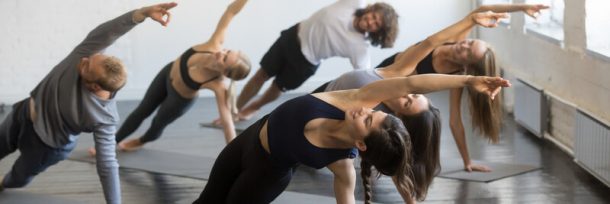The Jumpboard: Quick Guide
March 21, 2023
The jumpboard is an addition to the Pilates reformer which can add new dimension and challenge to your Pilates workouts. Essentially, the jumpboard is a vertical board that you attach to the end of the reformer. Once it is safely installed, you can use your legs or hands to push off from the board. The reformer’s sliding seat moves with you, and then returns to the starting position.
There are many advantages of using the jumpboard, and lots of fun ways to add it into your Pilates routine. Jumpboard Pilates classes challenge your cardiovascular system more than most and have a pace that is well-suited for intermediate and advanced Pilates practitioners (although beginners can use the jumpboard too). Here is what you need to know about the Pilates jumpboard.
The Advantages of the Jumpboard
Why add in the jumpboard to your routine, or why attend a jumpboard class? There are advantages of adding this accessory to your reformer. The jumpboard offers:
- Cardio: Once you’ve gotten used to various Pilates movements, increasing the intensity and upping the cardio can allows you to continue to challenge yourself. You’ll get the benefits of exercising your heart and improving your VO2 maximum. You’ll also increase your muscular endurance by performing exercises at increase speed. How does the jumpboard add cardio? It requires you to move quickly enough to finish up a stretch or movement in time to “land” on the board.
- Plyometric exercises: Plyometric exercises are those that use force and speed in different movements to increase your strength and physical condition. Using the jumpboard can allow you to perform various plyometric exercises. This is essential for athletes who need to build up explosive power, and it can be a great addition for anyone who just wants to add a new challenge to their routine.
- Reduced joint stress: While certain plyometric exercises tend to place stress on your joints, the reformer minimizes this. Your full body weight is on the reformer rather than on the jump board when you land, which takes a great deal of the impact off your ankles, knees, and hips.
- Variety: Our muscles get used to the exercises that we perform a lot. It’s wise to challenge them with new things and help keep workouts effective. Plus, workouts are more exciting and engaging when you switch things up!
- Fun: No one said exercising needs to be boring. Using the jumpboard is just plain fun, and it’s a great tool to use to help you stay motivated to keep doing Pilates.
How to Use the Jumpboard
In a Pilates jumpboard class you’ll be exposed to a whole series of exercises that take advantage of the board. We’ve selected some of our favourites below so that you can try them out yourself if you have access to the equipment.
- Single leg jumping: A basic jumpboard move, all this involves is alternating your legs as you jump so that you land and push off with one foot at a time. Focus on keeping your lower back against the reformer at all times throughout the movement.
- Wide jumping: Widen both legs, moving the feet to the edges of the jumpboard. Push off and land with both feet in this widened position. This helps work the muscles of the inner legs.
- Side single leg jumping: While lying on your side, use only your upper leg to jump. You can adjust your positioning to bring the leg forward or back during the jump to alter which muscles you’re challenging.
You can get started using the jumpboard at ABsolute Pilates. Sign up for a class today.
